Invisible History of Exhibitions – symposium 21-22 May, 2009, Budapest
Abstracts and bios of lecturers
Judit Angel
Complexul muzeal and related issues
Complexul muzeal was an Austrian – Romanian exhibition I curated in the Art
Museum of Arad in 1996. It was the outcome of a longer curatorial process
involving context-production around the museum as well as its connection to
regional and international art systems.
Starting from the problematic situation of the museum, I asked artists on
both sides to contribute to the re-evaluation of the institution, the
releasing of its potentialities and its re-contextualization.
Rather than illustrating the East – West cultural paradigm, there were the
differences pertaining to distinct social and cultural contexts I regarded
as implicitly manifest in the positions, perspectives and framings
developed by the artists. The results were an innovative exhibition format
which embodied a specific form of institution criticism as well as a joint
publication, which reframed the problems raised by the exhibition.
However, the issue of “intercultural dialogue”, which I had not explicitly
addressed in my curatorial concept, proved to be a much heavier ground.
There were gaps in our communication and this was visible in the exhibition
format. Institution criticism as a timely idiom was differently accessed by
the artists, and as it usually happens in discursive matters, the main
question was who sets down the rules.
My paper will present complexul muzeal as a particular case of institution
criticism and cultural co-operation. I will discuss the local context of
the exhibition, models of institution criticism of the time and the
solutions we adopted for the local case, the reception of the exhibition
and some historical, cultural and political aspects of our collaboration.
Judit Angel – Art historian, art critic and curator, born in Arad, Romania.
Between 1990 – 1998 chief curator of the Art Museum of Arad, Romania.
Commissioner of the Romanian Pavilion, curator of the Report exhibition,
Venice Biennial (1999). From 1998 she works as a curator at the
Műcsarnok/Kunsthalle in Budapest. Recent project: Interval - exhibition
series at Dorottya Gallery, Budapest (2009).
Orshi Drozdik
The Female Nude Model. Life drawing and art practice in the patriarchal art
history and in the state-party's art politics
The talk is about:
-the woman point of view and my personal experience in the seventies on the
subject of the academic practice of female nude life studies
-the patriarchal point of view in the curriculum of state controlled
cultural program
-the contradiction in the communist empancipatory program of women in state
socialism and the patriarchal point of view in the state-party's programmed
art education and in the representation of the female nude
-THE NUDE MODEL PERFORMANCE AND ITS CONCEPT introduces a gender specific
point of view and makes an early feminist statement – in synchrony with the
western feminist art movement -, without the support of western feminist
theory.
Orshi Drozdik Orshi Drozdik is professor at the Hungarian University of
fine Art. She is practicing art since 1975 in Budapest. 1978 emigrates to
Amsterdam, later she lived and worked in Amsterdam, Rome and in New York.
In the seventies, in Budapest, she is a HARBINGER of woman point of view in
art. In the eighties and nineties in her art and in her writings elaborates
on the early foundation of her gender specific point of view.
Maja and Reuben Fowkes
Partisan Exhibitions at the Zero Hour of Curatorial History
The new history of exhibition making might be seen as the first branch of
art history to be written in the mode of the post-national and in an era of
post-transition characterised by deterritorialisation and synchronicity. It
is striking that recent attempts to tackle the history of exhibitions are
taking place in both East and West Europe simultaneously, that the new
narratives are written by curators themselves and that the phenomenon of
the historicisation of exhibitions is also manifested as a trend towards
exhibition re-enactment in current curatorial practice.
The endeavour to write the history of exhibitions should also be seen as an
exercise in canon building, where the canon is understood as both a ‘body
of work worthy of study’ and at the same time as ‘an empty structure ready
to be filled with a specific content’. Canonising the exhibitions that took
place in Western Europe includes both the landmark exhibitions of curators
such as Lucy Lippard and Harald Szeemann, as well as the exhibitions which
critiqued the Western canon, including The Other Story (Hayward, 1989) and
Les Magiciens de la Terre (Pompidou, 1989). If canons can be understood as
vectors and empty structures that can be filled with content, then the
question arises whether the East European canon of exhibitions is being
created separately and in parallel to the Western canon, which now
simultaneously incorporates the Other, or whether the post-national
approach implies the elaboration of an all-encompassing canonical account.
The call to develop new methodologies that take into consideration the
particularities of East European art structures and exhibition history
resonates with Okwui Enwezor’s insight that to look for ‘an equivalent of
an Andy Warhol in Mao’s China is to be seriously blind to the fact that
China of the Pop Art era had neither a consumerist society nor a capitalist
structure.’ He goes on to assert that there is ‘no one lineage of
modernism, or for that matter of contemporary art,’ which is arguably
highly relevant in the context of global curatorial history.
Other aspects to be considered include the fact that it is predominantly
curators who are putting their own exhibition practice into the history
books, which might effect a reorientation of art historical structures.
Curators are also performatively addressing the historicisation of
exhibitions through their own exhibition practice, such as for example
Charles Esche and Maria Hlavajova’s re-enactment of Igor Zabel’s Venice
exhibition for the Brussels Biennial.
Maja and Reuben Fowkes are curators and art historians who deal in their
work with ecology, memory and translocal exchange. Their current projects
include curating a Revolutionary Trilogy, organising SocialEast Seminars on
the Art and Visual Culture of Eastern Europe, and researching the
environmental impact of contemporary art www.translocal.org
Izabel Galliera
Interrogating Curatorial Frameworks: Exhibitions of Art from Post-1989
Eastern Europe
Some of the several exhibitions of contemporary art from former Communist
Eastern European nations, staged in various countries in the years
following the fall of the Berlin Wall in 1989, include: Beyond Belief
(Chicago, 1995), After the Wall (Stockholm, 1999), Body and the East: From
the 1960s to the Present (Ljubljana, 1998), Aspects/ Positions: 50 Years of
Art in Central Europe (Vienna, 1999-2000), Blood and Honey (Vienna, 2002)
and In the Gorges of the Balkans (Kassel, 2003). I will critically approach
some of these exhibitions by primarily interrogating their proposed
framework, which I argue is based on a model of cultural representation. I
will consider them as spaces of negotiation of complexly ambivalent
artistic identities and curatorial strategies, caught within a perpetual
transnational in-betweenness. These exhibitions, each with its own distinct
approach, represent an interface of hybrid temporalities localized within
the geopolitical and cultural post-communist transitional condition. To
decipher their frameworks, I will look at their curatorial structures,
metaphorical titles accompanied by symbolic images on the catalogue covers,
and curators’ agencies and importance given to the process of naming and
renaming the cultural and geopolitical map of post-communist Eastern Europe
necessary to situate artistic practices. Equally relevant is the
legitimization and contribution of artists and curators to the maintenance
of this framework as well their simultaneous oscillation from and towards
this categorization. An analysis of these exhibitions will reveal the
discursive fabric of the artistic and curatorial tendencies, from an
identification focused on nationality and defined in terms of Otherness,
towards a self-reflexive and internal identification with the cultural
construct of Balkanism. The proposed study will show that artistic
practices and curatorial trends are simultaneously shaped and shaping these
frameworks through a consistent set of pluralities articulated by their
concomitant acceptance, negation, confrontation and negotiation which
ultimately informs their practice within the broader cultural and
geopolitical shifting conditions.
Izabel Galliera is a PhD. Student, at the Department of History of Art and
Architecture, University of Pittsburgh. Galliera has worked as Collection
Curator at the Drapkin Collection and as Assistant Curator at the USF
Contemporary Art Museum, where her latest curatorial initiatives included a
museum exhibition, Torolab: One Degree Celsius (2008), with Tijuana-based
artist collective Torolab; a series of three films, Film Screenings:
Socially-Engaged Artistic Practices, featuring various collaborative,
community-based art projects; and a one-day colloquium, Art as a Catalyst
for Social Transformation.
Reesa Greenberg
Exhibition histories: monographic, multimodal and meta reconstructions
At this pivotal point in the history of the history of exhibitions, the key
question is the relationship of the physical to the digital reconstruction
of exhibitions. Will the web primarily be used to enhance the monographic
model or will the web truly be transformative in the construction,
dissemination and use of knowledge about exhibitions and their histories?
The dominant model for presenting the history of exhibitions in the Anglo-
German world is the monograph devoted to landmark exhibitions. Whether
focused on a single event or constructing a genealogy, the monographic
model posits individual exhibitions as instruments of opposition, change
and/or progress. In other words, as currently constituted, the monographic
model circumscribes the exhibition field, restricts the kinds of questions
posed, and limits the approaches to historical reconstruction. What happens
when exhibitions are presented using a topographic rather than a
typographic model? Can use of the web, social media and shared commons
redirect the focus of exhibition histories? shift the emphasis from the
individual instance to a relational field? incorporate a greater variety of
perspectives and a broader international sphere? introduce more dynamic,
interactive approaches to the construction of history? inspire more
interrogative stances when representing the past in the present? initiate
more discussion of the present in relation to the past?
As a way of grounding these somewhat utopian questions, I will examine
recent instances of representing past exhibitions on-site and online and
current online archiving practices with regard to exhibition history.
Reesa Greenberg is an independent scholar and cultural historian. She
is co-editor of Thinking About Exhibitions, Routledge, 1996 and Adjunct
Professor of Art History at both Carleton University, Ottawa and York
University, Toronto. Her recent work focuses on studies of online and insitu
exhibitions.
Vít Havránek
“Schizophrenic Love” - Emotional relations to the public exhibition space
What were the relations – emotional as well as intellectual - towards the
exhibition space in the 50s, 60s and 70s behind the Iron Curtain? In
certain countries a wish for/fantasy of publicly accessible exhibition
spaces did not exist, in other countries existed only an idea of it, in
other countries for a limited time such a fantasy came true.
How to trace the interaction between non-existence, virtual existence, and
partial existence of a publicly accessible exhibition space and its
criticality, institutional critique and critique of the commodification?
How did the status of the publicly accessible exhibition space and its
criticality changed after the changes in 1989?
Vít Havránek is an art historian and curator based in Prague. He is the
project leader of tranzit.cz since 2002. Since 2007 he is the director of
tranzitdisplay, which organises exhibitions, lectures, screenings,
performances, conferences and other events. He serves as contributing
editor of JRP Ringier. Recent projects: Narrow focus, 2005; I (Ich)
performative Ontology, 2006; Monument to transformation 1989-1968-2009
(2007-2009)
Yelena Kalinsky
Exhibiting Discourse: Performance and the Archive in Moscow Conceptualism
This paper addresses two forms of conceptualist practice – performance and
collaborative artists’ archives – taken up by the Collective Actions group
and the Moscow Archive of New Art (MANI) circle in the late 1970s and early
1980s. As “exhibition platforms” – a term used by the artists themselves –
these paradigmatic works demonstrate how fundamental questions about the
nature and status of the art object and questions of art publics were
collocated within the discourse of Moscow Conceptualism.
While the dematerialization of the art object in Western Conceptualism led
to a powerful critique of institutions, such challenges from within were
inconceivable in late-Soviet Moscow. Abandoning the struggle for a broader
Soviet art public and refusing to participate in semi-official exhibitions,
the Moscow Conceptualists redirected the debate over exhibitions inward
toward a limited circle of informed participants. The dissolution of
traditional art objects into the temporal and spatial structures of private
performances and the tactile and discursive fabric of the home archive
became both the conditions in which Moscow Conceptualism was received and a
discourse on the status of the artwork. The question “Where is art
located?” thus took on a dual meaning, extending Conceptualism’s concerns
beyond nominalism and toward discursivity.
Yelena Kalinsky is a PhD candidate in the Department of Art History at
Rutgers University and a Fulbright Fellow in Moscow. She is currently
completing her dissertation, entitled "Collective Actions: Moscow
Conceptualism, Performance, and the Archive, 1976-1995" and recently
curated an exhibition on the Collective Actions group at the Zimmerli Art
Museum in New Brunswick, New Jersey.
kuda.org
The Novi Sad Neo Avant-garde of the 1960’s and 1970’s
Mapping of Social and Art History in Novi Sad - Methodology of an
Exhibition
“The Continuous Arts Class” exhibition is conceived in order to give
contextual insight into progressive and engaged art and activists practices
in Novi Sad during 1960s and 1970s, revealing complex political and
economic environment which determined those practices to a great extent.
The exhibition comprises new treatment and therefore contextual reading of
documentation of Neo Avant-Garde practices: of actions, interventions,
exhibitions, manifestos, and performances, including relationship of those
practices towards main economic, cultural and political turmoil in former
Yugoslavia (such are economic and cultural reforms dating from 1965, youth
and student movements of 1968, occupation of Czechoslovakia and their
consequences on re-structuralisation of social and political life in
Yugoslavia at the beginning of 1970s). In relation to the major context,
the exhibition also offers analysis of relationship of the New Art
Practices towards cultural establishment and dominant discourse of
socialist-realism, towards official cultural institutions (student
magazines and the Youth Tribune), practising models of self-organising,
networking (with protagonists of the Zagreb, Ljubljana and Belgrade's
scenes) and permanent discussions about autonomy of art, Marxism,
progressive political and art theories, alternative forms of organising
social and political life, including a quest for determining non-dogmatic
left position in former Yugoslav society.
New Media Center_kuda.org (www.kuda.org) from Novi Sad, Serbia, is
collective dedicated to new technologies, art, activism and politics.
kuda.org is an independent organization which brings together artists,
theoreticians, media activists, researchers and the wider public in the
field of information and communication technologies and is dedicated to the
research of new cultural relations, contemporary artistic practice, and
social issues. Branka Ćurčić is program editor in the New Media
Centre_kuda.org from Novi Sad, Serbia, since 2002. She graduated Fine Art
and Theory of Art and Media (MA) in Novi Sad and Belgrade. In the
Center_kuda.org, she is the editor of publishing project (kuda.read) and
she participates in organizing lectures, conferences, workshops and
exhibitions. She also takes part in several international research
projects. Zoran Pantelić is an artist, producer, educator. He holds a BA
and MA at the Academy of Fine Arts Novi Sad. He founded the association
APSOLUTNO in 1993 in Novi Sad, Yugoslavia. APSOLUTNO was a collective
dealing with interdisciplinary art work and media pluralism
<www.apsolutno.org>. In 2000 Zoran Pantelić founded new media
center_kuda.org, collective dedicated to new technologies, art, activism
and politics. Since 2005 he is teaching Media communication on Academy of
Fine Arts in Novi Sad.
Viktor Misiano
"Hamburg project" versus "Kliazma project". On Artistic Dialogue in a Time
of Transition
In a course of the 1990s I realized series of curatorial projects based on
the dialogical approach of the participant artistes (“Hamburg project”,
“Visual Anthropology Workshop” and others). That experience was summarized
in a series of texts among them in a laconic article titled “Curator
without a System” (published in “ARCO noticias”, and after it in a few
others issues, catalogue of the “After the Wall” exhibition included). The
dialogical curatorial - and also artistic - approach was related in this
text to the “transitional” condition of the post-communist countries.
Considering those countries’ weak and undeveloped infrastructural
conditions I defined the particular curatorial agent there as a curator
without a system. Trying to valorize this particular experience my analysis
emphasized the source of the external gaze and self-criticality, as also
the necessity for the face-to-face relations rooted in the position of the
curator who is lacking a system routine. However, that analysis ignored the
fact that in the same years, in a series of projects organized by both
artists and gallerists (“Art-Kliazma” festival among them) an art system
that did not presume the figure of curator was then in becoming. If to be
precise the curatorial agency was refused by that specific system without a
curator - as far as a curator is related to someone who is a bearer of the
external gaze and criticality. In my 1998’ text I insisted on defining
transitional condition as not only the Eastern but as a global one. That
was a way to give a universal status to the curator without a system. That
time I only missed that the global status acquired the system without a
curator as well.
Viktor Misiano is an international curator based in Moscow. He was the
director of the Center for Contemporary Art (CAC) in Moscow, the curator of
the Russian participation of various biennials (Istanbul, 1992; Venice,
1995, 2003; Sao Paulo Biennale, 2002, 2004), and the first Central Asia
Pavilion at the Venice Biennale, 2005. He was in the curatorial team of
Manifesta I, Rotterdam, 1996; and since 2003 founder and editor of
Manifesta Journal; since 1993, the Moscow Art Magazine. In 2007 he realized
the exhibition project Progressive Nostalgia: Art from the Former USSR in
Prato (Italy), Athens, Tallinn, and Helsinki.
Cristian Nae
From Events to Processes. Rethinking Public Sphere in the History of
Periferic Biennial
It is probably one of the best known international exhibitions taking place
in Romania today, the history of the ”Periferic” biennial is also
symptomatic for a specific relationship between art and the public sphere
and its recent historical changes. Since its inception as a performance
festival, ”Periferic” not only approached the concept of site-specificity
in terms of contextual discursivity instead of mere spatial localization,
but also questioned the power of performing artistic intervention in and
upon public sphere. Its further transformation into an art biennial is also
reflecting and commenting upon consequent transformations in the
conceptualization of public sphere and of peculiar artistic attitudes
towards it.
Taking this as a case study, the lecture aims at analysing the relations
between art exhibitions and the public sphere, making visible the socioeconomical
and political connections sustaining the discursive specificity
of the emergence of the biennial format as a critical exhibition in this
cultural space; and at the same time, looking for a conceptual frame and
appropriate theoretical devices to describe it.
Therefore, starting from the necessity to explain the rationale behind the
move from a performance festival to an art biennial, the text raises and
tries to answer a series of inter-related questions: under what type of
temporal descriptions we might understand the forms and intentions of these
exhibitions? How can they address the public sphere, and how might they
affect the representational paradigm in approaching the relation between
art and public sphere? Which theoretical descriptions of the “public
sphere” we might apply in this case, and what type of agonistic practices
might sustain its formation?
Cristian Nae is an art critic and theorist, living and working in Iasi,
Romania. He holds a Ph.D. in philosophy and is currently teaching at
"George Enescu" University of Arts, Iasi. He was editor of Vector>
Magazine, assistant curator of Periferic 7 Biennial of Contemporary Art,
Iasi and coordinated a Creative Mediation Project in the frame of Periferic
8 biennial. Currently, he is coordinating the Studio for Art Practices and
Debates, Iasi. He is presently editing the reader "New Publics Challenge
Art Theory". He translated into Romanian language Nicolas Bourriaud's
Relational Aesthetics and Postproduction at IDEA Publishing House in 2007.
Nataša Petrešin-Bachelez
Innovative forms of archive – exhibitions, events, books and museums
The interest and tolerance of the official art apparatchik in the socialist
and communist regimes for the experimental art production varied from a
country to country, thus affecting the respective scenes to develop in
different directions. The information, documentation and other printed
matter circulated among the groups of same-minded critics, writers and
artists, and rarely entered into the official art institutions. The artists
and directors of the experimental art venues kept collecting and piling the
documentation within their personal and spatial capabilities. By the end of
the 70s, the increasingly liberating atmosphere of what could be called
“the attempts of the early civil society in a socialist state” emerged hand
in hand with the underground creativity and thus also more insight into
these archives-created-by-artists was enabled.
These artists-archivists were thus “constructing their own context” -
where the artists functioned at the same time as both the observer and the
object of observation - if we draw the analogy with the main slogan of the
group Irwin from the 1990s. This “construction of one’s own context”,
appeared out of the fact that an individual (artist, intellectual) in the
former East could actively intervene in the field of articulation on the
level which otherwise corresponds to the activities of the institutions.
I would like to discuss how to evaluate artists who, from late 1980s until
today, work and produce works similar to the archivists and art historians
and how to define the works, events or publications that they produce
through these activities? On four case studies, I would observe what values
and status do the events of the Contemporary Art Archive/Centre for Art
Analysis of Lia and Dan Perjovschi, the publication and installation /East
Art Map/ by Irwin, the project /Museum of American Art/ in Berlin, or Tamas
St.Auby’s /Portable Museum/ have in common. Can these innovative forms of
archive be qualified in relation to the practice of exhibition making – as
a permanent exhibition or an exhibition in progress – or even as an archive
being institutionalised in various media and codified as a work of art?
Nataša Petrešin-Bachelez is an independent curator and writer, living and
working in Paris and Ljubljana. She is a PhD candidate at the Ecole des
Hautes Etudes en Sciences Sociales in Paris, where she co-directs a seminar
on artistic and curatorial practices. Currently she works as an associate
curator at the Centre Pompidou, working on the exhibition "The Promises of
the Past".
Prelom Kolektiv
The Case of Students' Cultural Centre in the 1970s
The Case of SKC in the 1970s is the exhibition of research materials:
documents, images, texts, films, testimonies, researchers' notes. This
exhibition, in a form of “a notebook in the space”, offers an insight into
the present stage of one part of the ongoing collective research project —
Political Practices of (Post-)Yugoslav Art, initiated by WHW (Zagreb),
kuda.org (Novi Sad), SCCA/pro.ba (Sarajevo) and Prelom kolektiv (Belgrade),
in 2006. The project traces, problematizes and articulates the
interrelationships of visual arts, intellectual production and sociopolitical
practices in the ex-Yugoslav space. It tries to give back the
political voice to the art which has been taken from it, both actively
(through the domination of “cultural industries” approach) and
retroactively (through the way it is historicized).
The “case” of Students’ Cultural Centre (SKC) in Belgrade reveals important
traits of a general constellation of the art and politics in the Socialist
Federal Republic of Yugoslavia. It is the characteristic of strategies
after 1968. to contain, pacify and institutionalise student or youth
culture as an “organized alternative”. Like many other students’ cultural
centres throughout SFRY, the SKC was an official state-constituted cultural
institution offering young artists and cultural workers “roof over their
heads”. At the same time, it was a place of avant-garde experimentation –
the introduction of new technologies, new expressions, new forms of
political activism and self-organization.
In the present cultural-political situation, the SKC is being both
fetishized and marginalized. On the one hand, it is seen as a space of
unlimited freedom and individual creative expression in the midst of
oppressive, totalitarian state. This romantic and nostalgic view is usually
followed by reactionary fascination with the formalist re-turn of language
and symbolism of the (neo-)avant-garde, characteristic of our postsocialist
condition. On the other hand, inside the new conservative trend
of re-constitution of national cultures, its historical contributions
remain excluded from the contemporary system of evaluation. The symptomatic
non-existence of the experience of the SKC’s artist, activist and
organizational practices shows the erasure of potentially still viable
strategies for contemporary regional cultural institutions. The research of
The Case of Students' Cultural Centre in the 1970s aims to extricate the
concrete relationships and transactions between artists and the institution
in order to reveal the political genealogy of contemporary art practices.
Our goal, therefore, is not to “discover” and historicize what is nowadays
seen as the underground art practices of some “brave” individuals in the
face of a totalitarian system. It is rather a call for re-examination, that
could point to the possibilities of reviving progressive and critical
experiences, existed on the cultural, artistic and intellectual scene in
former Yugoslavia from the contemporary standpoint of post-Yugoslav
situation in artistic and cultural production within the neo-liberal
constellation.
Journal Prelom was established in 2001 as a publication of Belgrade Center
for Contemporary Art. In past seven years (eight issues in five volumes)
Prelom became a space for critical inquiry in political constellations of
art, film and social theory in contemporary post-Yugoslav context. It
succeeded to involve individuals, groups and initiatives from ex-Yugoslavia
and beyond in collective effort to problematize, theorize and fight against
various, heterogenous and paradoxical forms of contemporary neo-liberal
capitalist hegemony. In the summer of 2004 Prelom lost its former
institutional background and the editorial board founded an independent
organization - PRELOM KOLEKTIV, constituting itself as a publisher and
laying foundations for integrating and expanding other activities beyond
just producing the Prelom journal (exhibitions, conferences, discussions,
activist actions, etc.). More info on www.prelomkolektiv.org.
Jelena Vesić is an art historian and curator, Dušan Grlja is a political
theorist, both are editors of Prelom Journal and members of Prelom
Kolektiv.
Georg Schöllhammer
Work with the Drawers, Slide Trays, Files and Boxes!
Even twenty years after 1989 the art from the so called Former East is
still confronted with a stereotypic reception that has its origins in
presentations in the early 1990s. Already by then it was palimpsested by
its reception, put at the disposal of the institutions, and integrated into
them: this was accomplished via the reduction of information and context in
order to make the work as homogenous as possible, by strictly limiting the
activities of artists and observers to an identifiable set of objects and
options, and by construing and establishing a stylistic rather than
content-based field through the streamlining of certain motifs. In contrary
to this, most of the histories of exhibitions still hide away in archives
and private collections that have been the source of information and
communication of a generation of artists. I will present some examples how
these archives have enabled communication, and how their forms and formats
have themselves influenced the work like macro-structure of some
exhibitions.
Georg Schöllhammer is a writer and curator based in Vienna and editor in
chief of springerin - Hefte für Gegenwartskunst
Isabelle Schwarz
Independent Art Spaces in Hungary and Poland: Artpool Archive, the Exchange
Gallery and the Accumulatory Gallery
The paper focuses three alternative art and exhibition spaces in Eastern
Europe founded by artists in the 1970s: “Artpool Archive” (Budapest, since
1979) by György Galántai (and its predecessor, the Chapel Studio,
Balatonboglár), the “Exchange Gallery” (“Galeria Wymiany”, Łódź, since
1978) by Jozef Robakowski and “Accumulatory Gallery” (Poznan, 1970s) by
Jaroslaw Kozlowski.
Numerous exhibitions and events were organized at these art spaces, outside
the official art scene and therefore under difficult conditions. These art
spaces took an international stand, because they functioned on the basis of
structures and strategies of different networks in which their founders
participated: on an international communication network that existed since
the 1960s through the circulation of artist’s publications (films, videos,
books etc.), the “Workshop of the Film Form” (“Warsztat Formy Filmowej”),
the Mail Art and/or the NET.
The paper examines how these art spaces were placed within the underground
art scene and against the official art institutions, how they functioned,
on which artistic or ideological concepts they were based and which meaning
they had for the participating artists and the respective local art scenes.
These questions will be discussed on the basis of the exhibitions that took
place at these art spaces during the 1970s and 1980s and under the
perspective of their archival function.
The aim is to analyze in how far these art spaces were influenced by art
historical ideas, concepts and movements and art discourses that emerged
since the 1970s and in how far they can be interpreted as works of art
themselves (considering and understanding them as an artistic form of
institutional critic). The paper compares the curatorial strategies, the
practices and concepts of the art spaces to bring out differences and
parallels between them and to relate them to the diverging structures of
the art scenes in the two countries at that time.
Isabelle Schwarz studied art, history and roman studies at University
Bremen and University of Seville. She graduated in 2006 in art history on
the topic of “Archives of artist’s publications of the 1960s to the 1980s”
at the International University Bremen (today: Jacobs University). She is
currently working at the Sprengel Museum Hannover, since 2006 as curator
assistant and since 2008 as head of the department for press and public
relations of the museum. At the Sprengel Museum Hannover she curated in
2007 the exhibition “1937. Auf Spurensuche. Zur Erinnerung an die Aktion
‘Entartete Kunst’” [“1937. Looking for Traces - In Remembrance of the
“Degenerate Art” Campaign”] and in 2008 the exhibitions “Drehmomente. Filme
von Dieter Roth” [„Films by Dieter Roth“] and „Nam June Paik. Werke aus der
Kunsthalle Bremen” [“Nam June Paik. Works from the Kunsthalle Bremen”]. Her
dissertation was published in 2008.
Keiko Sei
Exhibition in Video Cassette
Keiko Sei will talk about a video tape as an exhibition space. Hungary is
the birthplace of Infermental, ground-breaking video magazine project
initiated by Gábor Bódy. The project, during a decade of existence in the
period of 1980s, showed us a potential of a video cassette that can contain
and carry enormous amount of cultural, social and political information as
well as critical commentaries. Around the same time in Hungary, another
cultural personality, Mihály Kornis, was clipping images from TV that would
grow into a large archive of expositional media. The speaker observed these
media behaviors in East European countries between 1988 and 2002 as she was
accumulating her own video archive in the region. In this symposium she
proposes to examine the particular relationship between artists and video
cassettes in Eastern Europe, especially how an artist was seeing a video
cassette as an alternative space for an exhibition when exhibitions in
physical space were strictly regulated and limited.
Keiko Sei is writer, curator, and advocate of independent-media. Based and
works in Eastern Europe and Southeast Asia. Currently she is a guest
professor of media art and activism at Karlsruhe University of Art and
Design.
Emese Süvecz
Smuggling ideologies? – feminism in the Cold-War Hungary
The purpose of this paper is to reclaim feminist agency in the Cold-War
environment discussing an exhibition of Orshi Drozdik in 1977 Budapest.
Opposed to the often referred observations that the Eastern Block was a
feminism-free discursive space I am going to argue that Drozdik’s
exhibition was the first feminist show in Hungary.
Based on oral history interviews I am going to reveal the ambiguity of the
site-specific nature of the show as it was not only a displacement
questioning official art education but was also a feminist intervention by
literally blurring the boundaries between the private and the public,
though, this has never been entirely visible in its own time. From this
angle – based on the collected memories – I am going to reconstruct the
show, moreover pose the questions of to what degree can we speak about
counter publics in this particular case? In which sense can we consider The
Nude Model exhibition as a discursive event?
Emese Süvecz is an art critic and women's rights activist, MFA student at
the Malmo Art Academy, critical studies programme; editor of
tranzit.blog.hu. Her areas of interest is the curatorial role in exhibition
making in the institutional context of contemporary art.
Andrea Tarczali
Intelligence Increase = Intelligence Enhancement (Portable I2 Museum.
Pop Art, Conceptual Art, Actionism in Hungary in the sixties, 1956-1976.)
With my short essay, I would like to turn the attention on the exhibition
that introduces the reinterpreted sixties, which could be first seen in
Budapest in the summer of 2003 and since then it has lived several
international debuts (BAWAG Foundation in Vienna 2004, Museum of Modern and
Contemporary Art in Geneva 2005, CHB Berlin 2007, ICA Dunaújváros 2008).
The exhibition concept of the Portable Intelligence Increase Museum was
made in 1995 by Tamás St. Auby and the TNPU (International Parallel Union
of Telecommunication) and its improvement in 2003.
The formation of the collection is a reactive act: the NETRAF (Neo-
Socialist. Realist. International Parallel Union of Telecommunication's
Global Counter-Arthistory-Falsifiers Front) came up with the need for
correction, in answer to the representational format of the “The sixties”
exhibition in 1991, organized by the Hungarian National Gallery and the
“Aspects/Positions, Art in East-Europe between 1949 and 1999” exhibition in
1999 in Ludwig Museum, Budapest. Therefore, the exhibition may be
interpreted historically as well, like Tamás St. Auby’s art concept or the
correction activity of NETRAF. So this way the exhibition becomes
interesting like art activity and art energy, still it may be grasped by
those deflections that are manifest in the differences and the highlights
of the image created in alternative ways and the theme unfolding here.
The substance of the museum is based on collective memory and a kind of
automat-principle: it developed its image by questioning people of the era,
artists submitted their work and reproductions upon request (recommending
each other’s work as well). With the exhibition, the curator’s work has
also been reinterpreted, the role of the “nurse” (attention) is nearest to
approach those of the midwives of platonism.
The archives of the museum was created by an extended time-limit (between
1956 and 1976) without the confines of the genre: it contains paintings,
sculptures, objects, electronic music, happening-documentations, photos,
archival invitation cards and other documents, documentary films, poems,
texts, Samizdat-publications as well as a film of a contemporary house
party. Innovations of the exhibition appear on several levels. Although the
original concept is also a highlight of the exhibition, we cannot disregard
the tools that aim at modification of the reception. So besides the archive
projected together with its content that can be browsed and the “exhibition
case” that can be viewed, deck-chairs are also an important part of the
exhibition, as it offers an opportunity for relaxing as well as
experiencing the exhibition in a contemplative way.
I myself reckon the form of the exhibition as a vision about the phenomenon
called the “art of the sixties”, which is a database that can be expanded
continuously, as well as a call for a survey of this rich theme.
Andrea Tarczali, PhD candidate at ELTE University Budapest, art historian,
aesthetician (HU)
What, How and for Whom?
Revisiting the past, parallel researches
Whilst the dulling of the critical edge within the institutional context of
the (former) West is a side effect of the assimilation of critical
practices, the related critical phenomena in the Croatian context are still
not a part of the coherent ‘official’ narratives of the local art history.
This is the case primarily because of the focus on identity-based cultural
politics and the dysfunctional operation of the central cultural
institutions. By addressing several phenomena within the context of
Croatian modernist, neo-avant-garde and contemporary cultural production
the presentation will deliberate on some aspects of the relationship
between critical artistic production and the ways of contextualizing art.
It is especially interesting to trace how certain “innovative” gestures of
exhibition making and/or of art production are triggered by concrete
conditions within the framework of art institutions or socio-political
conditions.
In the contemporary Croatian context one can speak of a kind of cultural
continuity in which the activities of the earlier generations have been
intensified through different extra-institutional artistic and curatorial
researches, which aim to transgress the boundaries of “genres” of
autonomous work of art, white cube exhibition and art in public space.
Despite the fact that the artistic and curatorial activities that will be
presented employ different modes of expression they can be seen as parallel
researches that are taking the past as a point of departure for new
readings of the present moment without aspiration to create an “objective
knowledge”. This will provide a platform for reflection on how these new
readings are incorporated in the contexts of exhibition making,
institutional framework and its alternative possibilities.
'What, How & for Whom' (WHW) is a non-profit organization for visual
culture and curators' collective formed in 1999 and based in Zagreb,
Croatia. Its members are curators Ivet Ćurlin, Ana Dević, Nataša Ilić and
Sabina Sabolović and designer and publicist Dejan Kršić. WHW is currently
curating the 11th Istanbul Biennial (2009). What, How & for Whom (WHW) is
the first recipient of the Igor Zabel Award for Culture and Theory 2008.
Magdalena Ziolkowska
Idea Art
Jerzy Ludwiński (1930-2000), Polish art historian and art critic,
understood the exhibition as a structure that can be manifested in variable
media. It held the same importance whether it was present in visible
institutional space or in the format of a text because the exhibition did
not exhibit anything anymore. Instead, it was turned itself into a space of
discourse the role of which was to extend and reveal the artistic process
that lasted much longer than the time of its presence in the institution.
Idea Art – a project initiated by Ludwiński in 1970 – took place on the
loose pages of its own catalogue eliminating the exhibition space entirely
and neutralising the secondary meaning of the medium of the catalogue. The
body of the project – material delivered by invited artists in the form of
manifestos, instructions, theoretical works – was without any critical
introduction and contained only seriographs of artists‘ proposals freely
distributed in an envelope in the same way as much mail art of the period.
The attempt of the presentation is to contextualise the Idea Art within
Western conceptual strategies as well as place it among initiatives taken
by artists and curators from Central Europe.
Magdalena Ziolkowska - art historian and curator, PHD researcher at the
Graduate School of Social Research in Warsaw. Her areas of study focus on
art museums in Europe between 1965–1975 and their various attempts to
create a discourse around their function in a changing public sphere.
Currently working as a curator in Muzeum Sztuki in Łódź, PL.
Participants of the roundtable:
Júlia Klaniczay co-founder of Artpool (1979) and co-publisher/editor with
György Galántai of AL (Art /Artpool Letter, samizdat art review (1983-
1985), editor of Belvedere /Critical Art Review/ (1990-1991). Since 1992
director of Artpool Art Research Center, editor of Artpool's publications
and co-editor of www.artpool.hu.
Lívia Páldi studied English Literature and Language and Art History at the
Eötvös Lóránd University, Budapest. She was co-founder and between 1997-
2000co-director of the Institute of Contemporary Art - Dunaújváros. Since
2005 she works as curator and since 2007 as chief curator of the Mőcsarnok
/ Kunsthalle, Budapest.
Katalin Timár is a curator and theorist, a doctoral candidate in
communication studies at the University of Pécs, Hungary. She was a
founding member of a research group for contemporary art theory, based at
the Dept. of Aesthetics at ELTE University, Budapest. She was the curator
of the Hungarian Pavilion at the Venice Biennale in 2007 which received the
Golden Lion Award for best national pavilion. She was the recipient of a
Getty Grant (1999), a Doctoral Support Grant (CEU, 2000), and a Henry Moore
Research Fellowship (2001).

 tranzit is a contemporary art program supported by the Erste Bank Group
tranzit is a contemporary art program supported by the Erste Bank Group

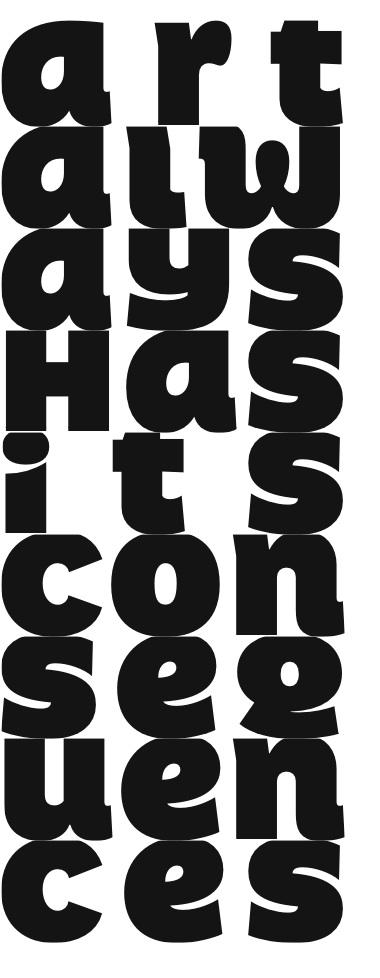 The exhibition Parallel Chronologies and the symposium The Invisible
History of Exhibitions is part of the international project Art Always Has
Its Consequences co-financed by the Culture 2007 program of the European
Union (partners: WHW Zagreb, tranzit. hu, Muzeum Sztuki Łódź, kuda.org
Novi Sad).
The exhibition Parallel Chronologies and the symposium The Invisible
History of Exhibitions is part of the international project Art Always Has
Its Consequences co-financed by the Culture 2007 program of the European
Union (partners: WHW Zagreb, tranzit. hu, Muzeum Sztuki Łódź, kuda.org
Novi Sad).
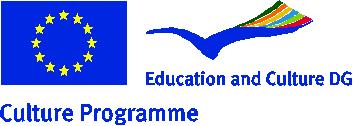

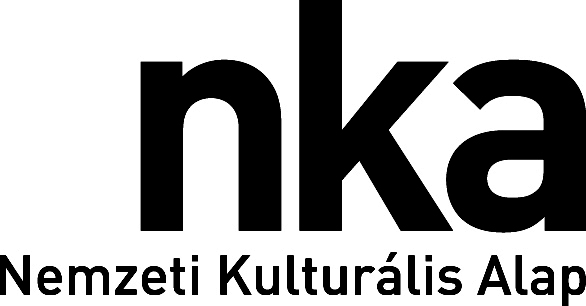
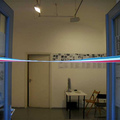
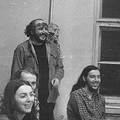
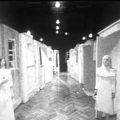
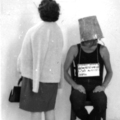
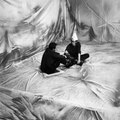
Utolsó kommentek